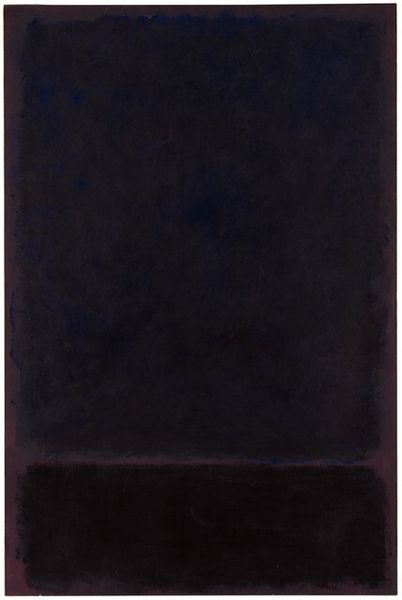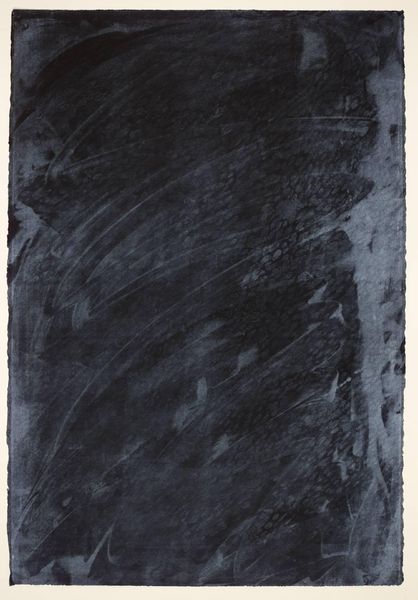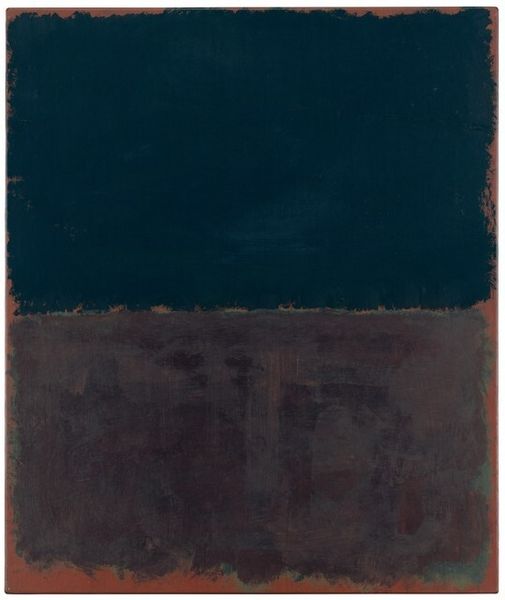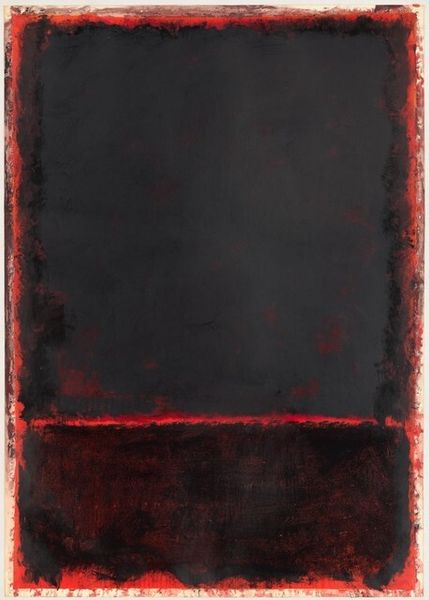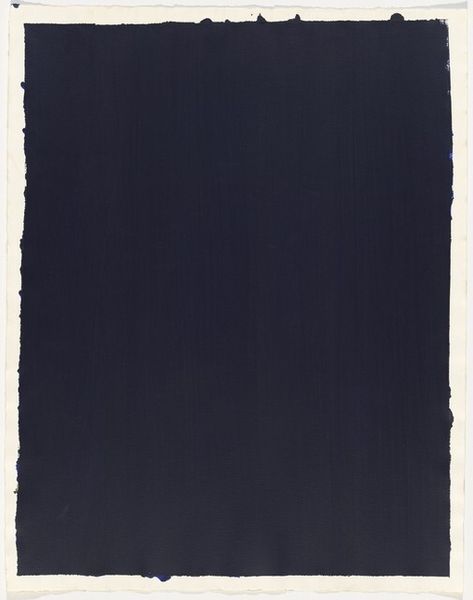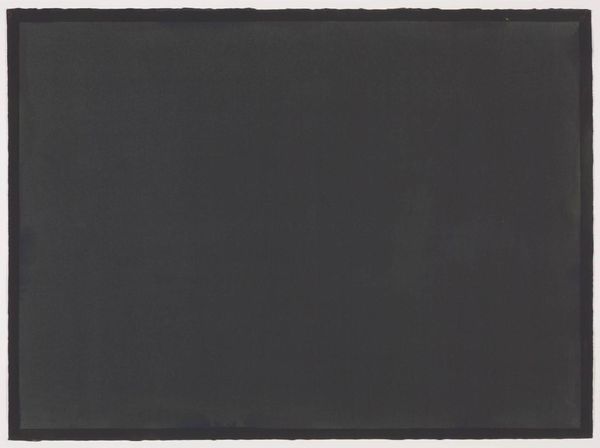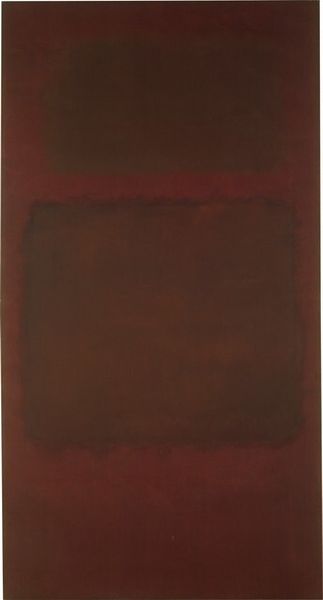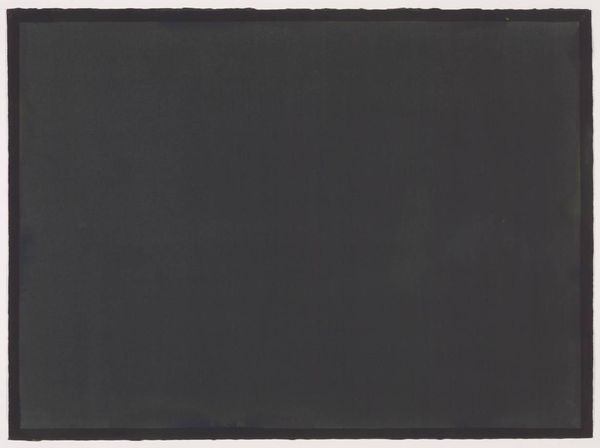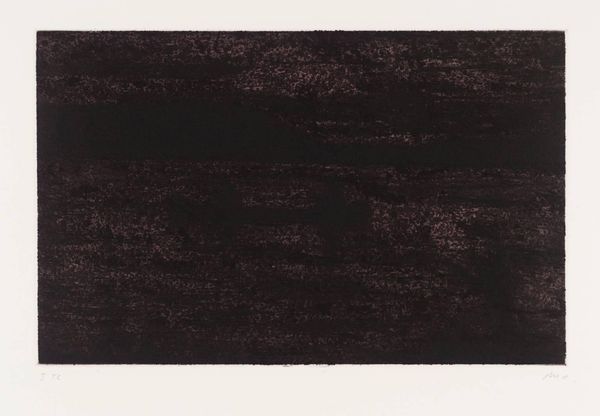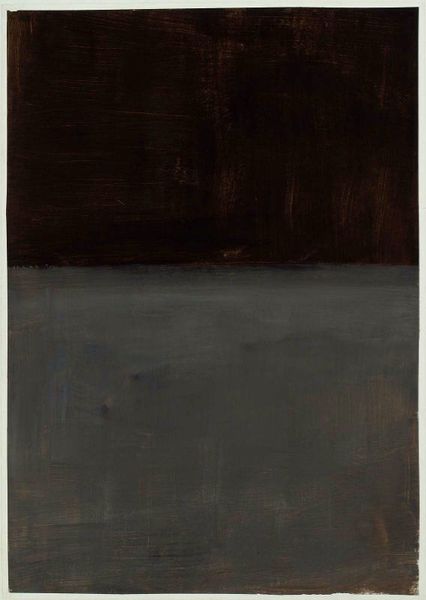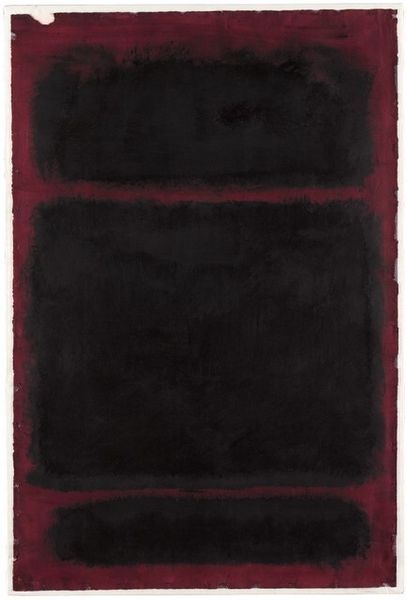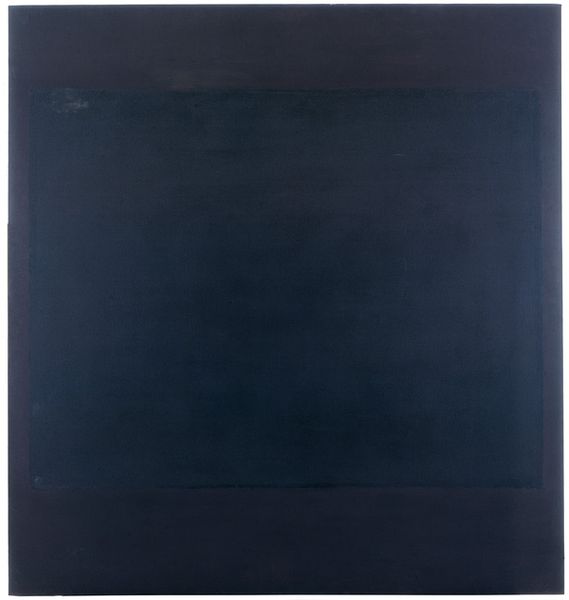
painting, oil-paint
#
abstract-expressionism
#
abstract expressionism
#
painting
#
oil-paint
#
colour-field-painting
#
form
#
abstraction
#
abstract art
Copyright: National Gallery of Art: CC0 1.0
Curator: Standing before us is an untitled painting by Mark Rothko from 1968, crafted with oil on canvas. What's your immediate reaction to it? Editor: It feels intensely somber. The two dark, almost maroon rectangles stacked on top of each other... it's like looking into a void. There’s a weighty quality to it. Curator: Rothko's work often aims to evoke precisely that kind of emotional response. Thinking about it in the context of 1968, a year of immense social and political upheaval, does that mood resonate any differently? Editor: Absolutely. You can't divorce it from that time. The Vietnam War was raging, there were civil rights protests and assassinations… It’s hard not to see this darkness as a reflection of that collective despair, that sense of societal unraveling. And look closely at the edges: those soft, feathered boundaries between the blocks and the ground. It suggests a vulnerability, like the whole thing could dissolve. Curator: Rothko meticulously layered the oil paint, diluting it to achieve that luminosity and blurring you pointed out. He was very particular about how his paintings were lit and viewed, ensuring an immersive experience. The surface texture itself invites close inspection, a slow reveal of how it came into being. Editor: That reminds me of how some theorists discussed the psychological impact of consumer culture during that period – that the blurring of boundaries, the dissolving of distinctions between real and unreal, mirrored the anxiety of mass production. How it flattened individual expression under homogenous forms. Rothko using the grid as a method for abstraction counters any perceived mass production with an assertion of internal creative labor, don't you think? Curator: It's a fitting argument to consider that abstraction can be very human as an affirmation of the artist labor. Editor: Ultimately, despite its somber tones, this artwork speaks to the complex socio-political climate of its time. There are profound emotional resonances that are hard to ignore and impossible to look away from. Curator: Exactly, and by considering its materiality and construction, we reveal new possibilities and an invitation to engage intimately with its artistic process. A rich and multilayered experience.
Comments
No comments
Be the first to comment and join the conversation on the ultimate creative platform.


